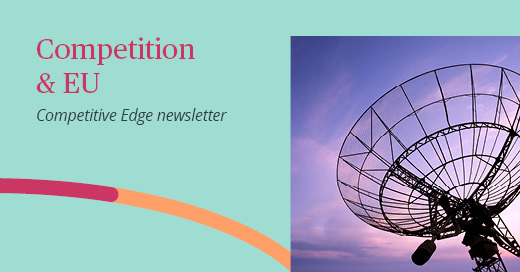Are Trademark Coexistence Consent Letters Admissible?
It has become increasingly common practice for the owners of cited trademarks to issue a coexistence consent letter to remove prior trademarks and increase the probability of winning a review case involving the rejection of a trademark registration application. While current PRC Trademark Law makes no mention of the effectiveness of coexistence consent letters, the practice has essentially been recognized by the National Intellectual Property Administration (CNIPA) and the courts.
In 2016, the Supreme People’s Court recognized a consent letter submitted by the applicant in a retrial case regarding the rejection of Google LLC’s trademark application no. 11709162 “NEXUS”. The marks for which Google had applied which were identical to the cited prior mark, which was the property of Shimano Inc., and were permitted to proceed to registration although both applied to the same or similar goods. This ruling gave greater weight to the use of coexistence consent letters in judicial practice and has been taken as a universally applicable approach to increasing the odds of retrial success.
In 2019, the Beijing High People’s Court promulgated the “Guidelines for the Trial of Trademark Administrative Cases”, which state that “in determining whether a disputed mark is similar to any cited mark, coexistence agreements may serve as preliminary evidence for eliminating the likelihood of confusion”. This provision points the way toward the establishment of unified standards and rules for the examination of trademark coexistence consent letters.
In practice, however, uncertainty still surrounds their admissibility. Judicial precedent shows that coexistence consent letters are not universally applicable. For example, although both parties submitted coexistence agreements in the administrative cases of the second instance in respect of the following marks, Beijing High People’s Court did not always accept them.
Cases where coexistence consent letters were accepted:
| Disputed Mark | Cited Mark | Judgement No. | Date | Summary of the Judgement |
|
No. 22213673 " |
No. 5811893 " |
(2019) Jing Xing Zhong No. 7961 | 30 September 2020 | There are certain differences between the disputed mark and the cited mark, and the owner of the cited mark issued a coexistence consent letter. In the event that the consent letter does not contravene any law or administrative regulation, the role of a consent letter in eliminating the likelihood of confusion should be considered. Accordingly, it can be determined that coexistence of the disputed mark and the cited mark would not cause confusion or mislead the public. Therefore, the disputed mark and the cited mark do not constitute similar trademarks in respect of the same or similar goods. |
| No. 20356906 “REVERO” |
No. 16281594 “REVERE” |
(2019) Jing Xing Zhong No. 7703 | 26 August 2020 | The disputed mark is not identical to the cited mark, and the owner of the cited mark already gave their consent in writing for the registration application of the disputed mark. Use of the disputed mark and the cited mark on the same or similar goods would not cause confusion or mislead the public about the source of the goods. |
| No. 30008387 “CLEANAMP” |
No. G1081908 “CLEANMAP” |
(2020) Jing Xing Zhong No. 3301 | 24 August 2020 | The disputed mark and the cited mark contain the same letters, but in a different order. Moreover, considering that the two marks are differentiable and their co-existence would not confuse or mislead, the owner of the cited mark agreed to the registration and use of the disputed mark in respect of the designated goods. Therefore, the disputed mark and the cited mark do not fall under Article 30 of the Trademark Law. |
Cases where coexistence consent letters were not accepted:
| Disputed Mark | Cited Mark | Judgement No. | Date | Summary of the Judgement |
| No. 30191626 “TAYRON” |
No. 1613996 “TYRON” |
(2020) Jing Xing Zhong No. 4508 | 31 August 2021 | There is a difference of only one letter between the disputed mark and the cited mark. Although Volkswagen AG issued a coexistence consent letter, given that the disputed mark is almost identical to the cited mark, the consent letter is insufficient to eliminate the likelihood of confusing or misleading the public about the source of the goods. Therefore, there is no justified basis for allowing the registration of the mark “TAYRON”. |
| No. G1334332 “BioMatrix” |
No. 6023755 " |
(2020) Jing Xing Zhong No. 7026 | 21 July 2021 | There is a difference only in the combination of letters between the disputed mark and the cited mark, and thus the two marks are very similar. Registration of the disputed mark would damage the legitimate rights and interests of the public. Therefore, a coexistence consent letter is not a justified basis for permitting the registration of the disputed mark. |
| No. G1256718 “GRANEXIN” |
No. 21823731 “GRAZEXIN” |
(2020) Jing Xing Zhong No. 3306 | 30 July 2021 | The disputed mark and the cited mark are almost the same, and both are used in respect of the same or similar goods. Therefore, the registration of the disputed mark should not be allowed solely on the basis of a coexistence agreement. |
The facts of the above-mentioned cases are similar: a disputed mark that differs from the cited mark in the matter of only a few letters, and parties that have submitted a coexistence agreement in accordance with their genuine intent. Despite this, the Beijing High People’s Court issued judgments contrary to the parties’ intent. To reach a coexistence agreement through negotiation requires great effort, as well as resources and time, including notarization and legalization in cases where the party who issues a letter of consent is a foreign entity.
The process is complicated. If it remains uncertain whether a coexistence agreement will ultimately be admissible, this may affect market expectations and the normal business activities of the parties. Therefore, further improvement to existing standards and rules for the examination of trademark coexistence consent letters, including requirements for their acceptance, the means of balancing market demand and the autonomy of the willingness of trademark proprietors in terms of public and consumer interests, is of great importance.
From a practical standpoint, at this stage, trademark applicants should exercise prudence and caution when submitting coexistence consent letters for trademark registration cases. In most of the decisions recently issued by the CNIPA that involved such letters, the letters were not accepted because the CNIPA stated that they could not be the basis for permitting the registration of trademarks. In light of this, applicants wishing to obtain preliminary approval of their trademark registration by submitting coexistence consent letters should carefully evaluate and consider the following factors:
1. Similarity of the applied-for mark to the cited mark
In the event that the applied-for mark is similar to the cited mark - for example, differing only in the matter of a few letters or being almost the same in distinguishing parts - the applicant should lower their expectations of winning the review case through the submission of a coexistence consent letter, while simultaneously increasing the probability of said letter being accepted through a limitation on the scope of designated goods.
2. Whether the classes of goods in which both parties’ marks are designated are likely to be deemed closely related to public interests
In the event that the goods designated for the applied-for mark are found to be closely related to public interest – for example the categories of “pesticides and chemical fertilizers” or “medical apparatus and instruments” – the CNIPA and the courts are more stringent in determining the likelihood of confusion between the two marks. For example, in the review decision concerning international trademark registration no. 1326269 “FLUENT”, the CNIPA held that “even if the dispute between the trademark applicant and the owner of the cited mark as to the civil rights and interests of the specific entity that files a trademark registration application and exercises trademark rights is settled through a coexistence consent letter issued by the registrant of the cited mark, the trademark registration mechanism itself plays a role in safeguarding public order and public interests”. Accordingly, registration of the applied-for mark was rejected. Therefore, if registration of a mark involving coexistence consent letters are of this type, other approaches in addition to the recourse to coexistence consent letters should be considered in obtaining trademark registration approval.
3. Brand recognition of the two parties and their marks
In the above case involving “NEXUS”, the Supreme People’s Court accepted the coexistence consent letter for one important reason; namely that the applicant, Google LLC, and the owner of the cited mark, Shimano Inc. are both renowned companies in their respective fields. In such instances, a coexistence consent letter is more likely to be accepted if evidence in support of the renown of both parties and their marks is submitted in a timely fashion to the CNIPA and the court.
4. Whether the two parties are associated with each other
Where the applied-for mark is associated with the owner of the cited mark, a coexistence consent letter is more likely to be accepted. Therefore, the association (if any) between the parties should be expressly stated in the consent letter, in order to increase the chance of its acceptance.
After considering the above factors, when deciding to approach a review case by submitting a coexistence consent letter, the new trademark application should be filed in a timely manner. When filing a new application, it is important to consider enhancing the distinctiveness of the design of the applied-for mark from any potential cited mark, so as to reduce the likelihood of confusion caused by actual coexistence, and at the same time increase the probability that the coexistence consent letter is accepted during subsequent review proceedings.
Reference cases:
- Case no. (2016) Zui Gao Fa Xing Zai No. 103
- Case no. Shang Ping Zi [2018] No. 0000172906
- Case no. (2019) Jing Xing Zhong No. 7961
- Case no. (2019) Jing Xing Zhong No. 7703
- Case no. (2020) Jing Xing Zhong No. 3301
- Case no. (2020) Jing Xing Zhong No. 4508
- Case no. (2020) Jing Xing Zhong No. 7026
- Case no. (2020) Jing Xing Zhong No. 3306
- “Guidelines for the Trial of Trademark Administrative Cases”, 2019-4-24

 "
"

